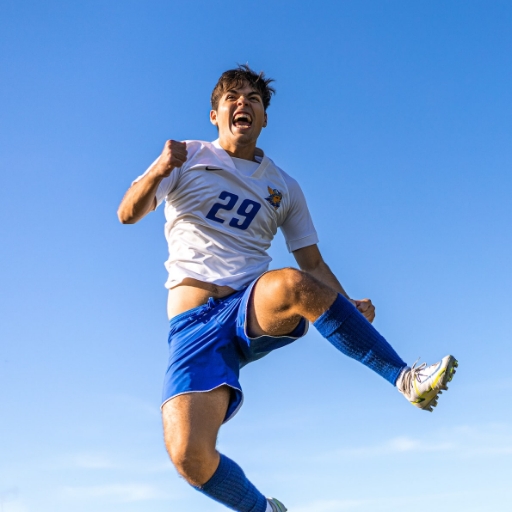What is NIL? – Everything You Need to Know About Name, Image, Likeness
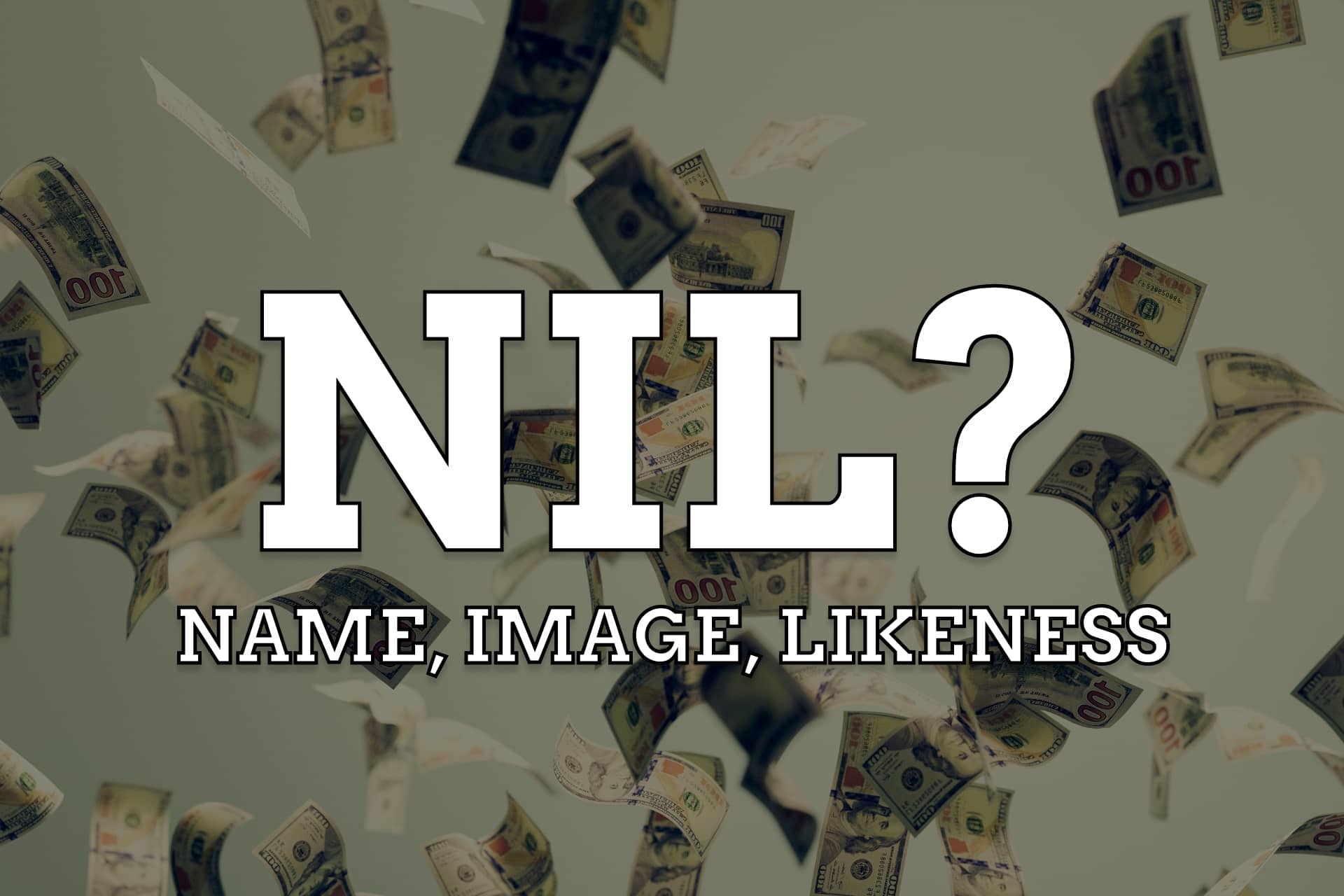
Trying to understand what is NIL? Are you curious about the latest buzzword in the world of sports? Look no further, because today we’re diving into the fascinating realm of Name, Image, and Likeness, also known as NIL. With the recent changes in NCAA regulations, athletes are now able to capitalize on their own brand and monetize their name, image, and likeness. This groundbreaking development has completely revolutionized the landscape of college sports, opening up a world of opportunities for student-athletes. From endorsement deals to social media sponsorships, the possibilities are endless. But what exactly does NIL entail? In this comprehensive guide, we’ll explore the ins and outs of NIL, demystifying this exciting new concept and shedding light on how it has reshaped the way we view collegiate athletics. Whether you’re a sports enthusiast or simply interested in the business side of sports, this article is a must-read to stay ahead of the game. So, let’s embark on this journey to unravel the mysteries of NIL and discover how it’s transforming the future of college sports.
Understanding Name, Image, and Likeness
Name, Image, and Likeness (NIL) refers to the rights individuals have to control and profit from their own names, images, and likenesses. In the context of college athletics, it allows student-athletes to earn money through endorsement deals, sponsorships, and other commercial opportunities. Until recently, NCAA regulations prevented athletes from profiting off their NIL, but with the changing landscape of college sports, these restrictions have been lifted, giving student-athletes the ability to monetize their personal brand. This newfound freedom has sparked a wave of excitement and controversy, as it presents both opportunities and challenges for athletes, universities, and the sports industry as a whole.
The concept of NIL is not entirely new. Professional athletes have long been able to profit from their personal brands through endorsement deals, merchandise sales, and other revenue streams. However, the NCAA’s previous rules prohibited college athletes from engaging in similar activities, arguing that it would compromise their amateur status. This outdated stance has faced criticism over the years, as college sports generate billions of dollars in revenue, while athletes often struggle financially. The movement to allow student-athletes to capitalize on their own NIL gained traction, eventually leading to the recent changes in NCAA regulations.
NIL encompasses various aspects, including the use of an athlete’s name, image, voice, signature, and social media presence for commercial purposes. This means that athletes can now enter into endorsement deals with companies, promote products or services on their social media platforms, and earn money through appearances and autograph signings. With the rise of social media influencers and the power of personal branding, NIL provides student-athletes with an unprecedented opportunity to leverage their popularity and monetize their athletic careers.
The history of NIL in college athletics
To understand the significance of the current NIL landscape, it’s essential to explore the history of NIL in college athletics. For decades, NCAA regulations strictly prohibited student-athletes from profiting off their NIL, emphasizing the importance of amateurism. This approach aimed to maintain a level playing field and prevent a professionalization of college sports. However, as the commercialization of college sports grew, so did the calls for change. Athletes and advocates argued that it was unfair for universities and the NCAA to profit immensely from their performances while they received little in return.
The debate surrounding NIL intensified in recent years, with high-profile cases shedding light on the challenges faced by student-athletes. One such case was that of Ed O’Bannon, a former UCLA basketball player who sued the NCAA for using his likeness in video games without his permission. The lawsuit brought the issue of NIL to the forefront, highlighting the need for reform. As public opinion shifted in favor of student-athletes, the NCAA began to reassess its position on NIL, ultimately leading to the policy changes we see today.
In 2021, the NCAA announced significant changes to its NIL rules, allowing student-athletes to profit from their NIL without jeopardizing their eligibility. This landmark decision marked a turning point in college athletics, as it recognized the rights of student-athletes to control and monetize their personal brands. The new regulations empower athletes to secure endorsement deals, pursue business opportunities, and take advantage of their social media presence to generate income. It’s a game-changer for college sports, offering student-athletes newfound financial opportunities and a chance to build their personal brands while still pursuing their education.
The impact of NIL on student-athletes
The impact of NIL on student-athletes is far-reaching and multifaceted. On one hand, it presents exciting opportunities for athletes to earn money and gain financial independence. For many student-athletes, the ability to monetize their NIL can alleviate financial strain, allowing them to cover living expenses, support their families, or invest in their future. It also provides a platform for athletes to build their personal brands, establish connections with businesses, and develop valuable skills in marketing and entrepreneurship.
However, the impact of NIL is not without its challenges. Managing endorsement deals, sponsorships, and other commercial obligations while balancing academics and athletic commitments can be overwhelming for student-athletes. The pressure to perform on the field or court while maintaining a strong social media presence and fulfilling contractual obligations can take a toll on their mental and physical well-being. Additionally, the potential for exploitation and unethical practices in the business of NIL raises concerns about the fairness and integrity of college sports.
The impact of NIL is not limited to individual athletes. It also has broader implications for universities, athletic programs, and the sports industry as a whole. Universities now face the task of navigating the complexities of NIL, ensuring compliance with regulations, and supporting their student-athletes in maximizing their opportunities. Athletic departments must adapt to the changing landscape, developing strategies to attract and retain top recruits by showcasing their ability to facilitate NIL opportunities. The sports industry, including brands and marketers, must rethink their approach to college sports, considering how NIL can be leveraged to reach and engage with the highly influential student-athlete demographic.
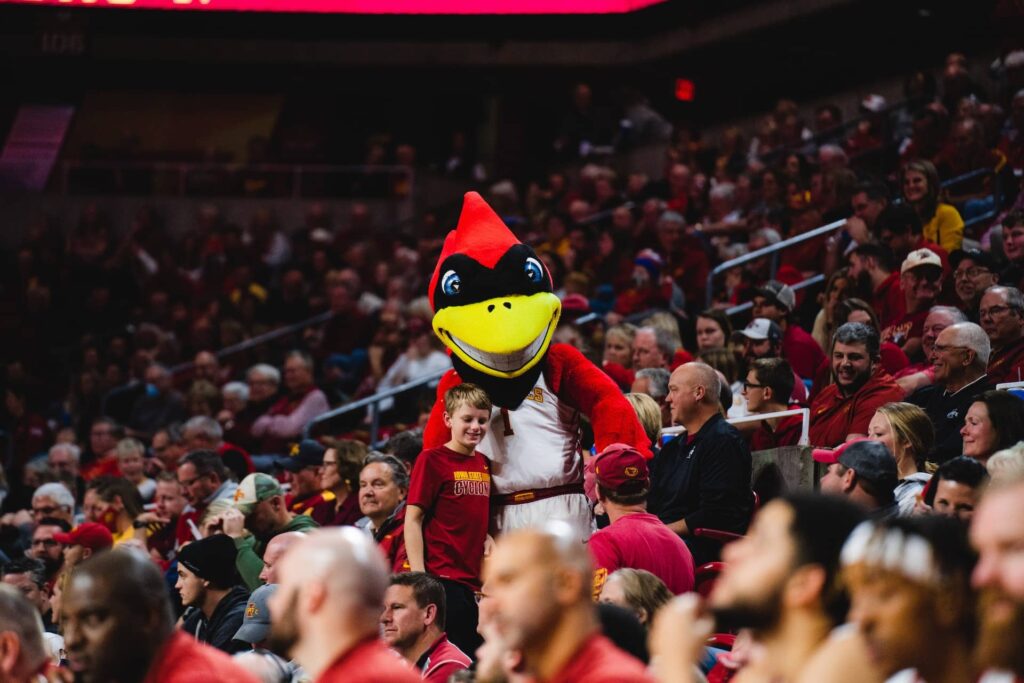
Advantages and disadvantages of NIL
The advent of NIL brings numerous advantages for student-athletes. The ability to monetize their personal brand allows athletes to financially benefit from their hard work, dedication, and talent. It provides an avenue for athletes to secure their financial future, especially for those who may not pursue professional sports careers. NIL also promotes entrepreneurship and business skills development, as athletes navigate endorsement deals, negotiate contracts, and manage their personal brand. Moreover, it encourages transparency and fairness, as athletes have the opportunity to earn what they deserve for their contributions to the sports industry.
However, there are also disadvantages and challenges associated with NIL. The increased focus on monetization may shift the focus away from the true essence of college sports, which is education and personal growth. Student-athletes may find themselves overwhelmed with contractual obligations and commercial responsibilities, leaving less time and energy for academics and other extracurricular activities. The potential for exploitation and unethical practices in the business of NIL is another concern, as athletes may be taken advantage of or face dishonest representation. It’s crucial to strike a balance between the benefits and risks of NIL to ensure a fair and equitable environment for student-athletes.
To mitigate the disadvantages and maximize the advantages of NIL, clear guidelines, education, and support systems are necessary. Universities and athletic departments should provide resources and guidance to help student-athletes navigate the complex world of NIL, ensuring they understand their rights and responsibilities. Collaboration between athletes, universities, and brands is essential to foster ethical practices and protect the interests of all parties involved. Ongoing evaluation and adjustments to the regulations surrounding NIL will also be crucial to address potential issues and maintain the integrity of college sports.
College Finder Tool
Send your video to any college coach in the country.
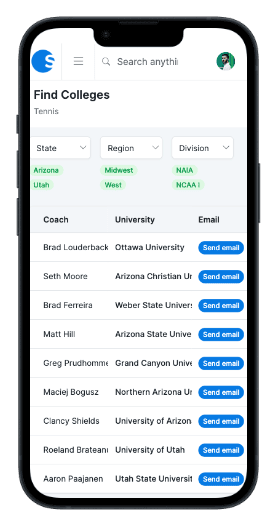
How NIL affects college sports recruiting
NIL has had a significant impact on college sports recruiting. With the ability to monetize their personal brand, student-athletes now consider NIL opportunities as a crucial factor when choosing a university or athletic program. The potential for endorsement deals, social media sponsorships, and exposure through personal branding can be a deciding factor for recruits. Universities and athletic departments must adapt their recruiting strategies to highlight their ability to support student-athletes in maximizing their NIL potential. This includes showcasing the university’s connections with brands, alumni networks, and resources available to help athletes build their personal brands.
The rise of NIL has also opened up opportunities for universities and athletic programs to differentiate themselves in the highly competitive landscape of college sports. Schools that can provide a supportive environment for athletes to thrive both academically and commercially will have a competitive advantage in recruiting top talent. The ability to attract high-profile recruits can elevate the status and visibility of athletic programs, leading to increased revenue, fan engagement, and overall success.
Recruiting in the NIL era also brings new challenges and considerations. Universities must ensure compliance with regulations to avoid potential violations or reputational damage. They must also navigate the potential complexities of managing the relationships between athletes and brands, ensuring transparency and fairness. The increased focus on NIL may also lead to a shift in the dynamics of recruiting, with athletes prioritizing programs that can offer the best opportunities to monetize their personal brand, potentially altering the traditional power balance between universities and recruits.
Legal considerations and regulations surrounding NIL
The introduction of NIL in college athletics has prompted a need for clear legal considerations and regulations. While the NCAA has relaxed its previous restrictions, there are still parameters in place to ensure compliance and maintain the integrity of college sports. State legislatures have also taken action, passing NIL laws that provide additional guidelines and protections for student-athletes. It’s crucial for athletes, universities, and brands to understand and adhere to these regulations to avoid potential violations or legal consequences.
One of the key legal considerations is the distinction between permissible NIL activities and impermissible pay-for-play arrangements. While student-athletes can now earn money through their NIL, they cannot receive compensation for athletic performance or participation. This line is often blurred, and careful monitoring and education are necessary to ensure compliance. Universities and athletic departments must provide guidance to athletes on what is allowed and what crosses the line, protecting both the athletes’ eligibility and the integrity of college sports.
The legal landscape surrounding NIL is still evolving, with ongoing discussions at the federal level to establish a nationwide framework. The NCAA is also in the process of developing its own rules and guidelines to provide consistency across states and conferences. As the legal landscape continues to take shape, it’s essential for all stakeholders to stay informed and adaptable, understanding the implications of their actions and seeking legal counsel when necessary.
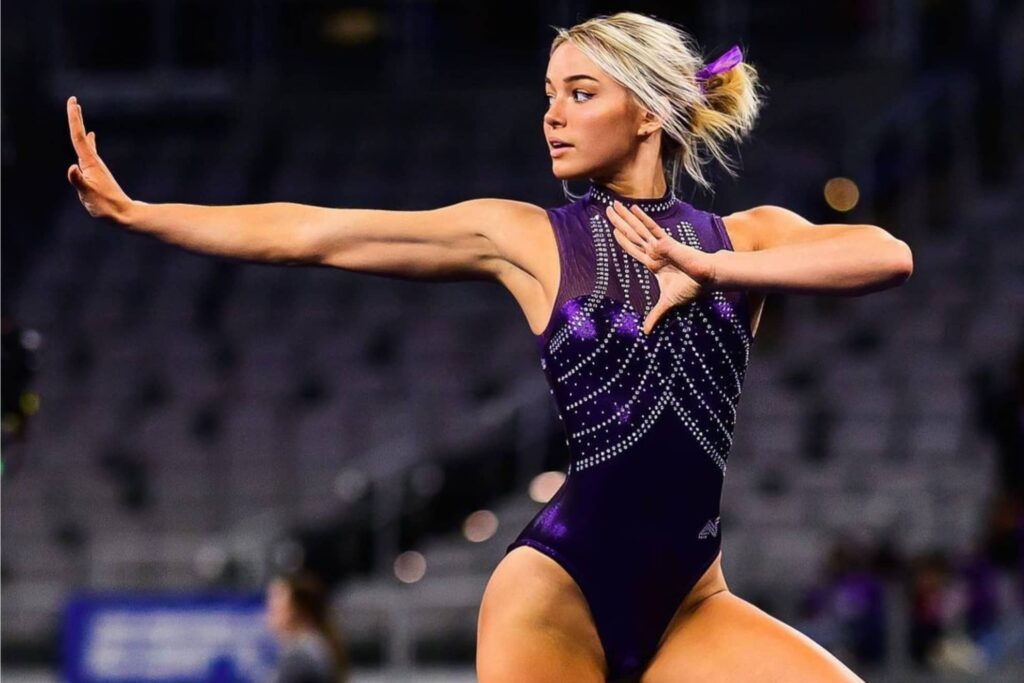
Examples of successful NIL partnerships and campaigns
The implementation of NIL has already led to numerous successful partnerships and campaigns between student-athletes and brands. These collaborations showcase the diverse range of opportunities available to athletes and highlight the power of personal branding. One example is the partnership between University of Miami quarterback D’Eriq King and the Florida Panthers, a National Hockey League team. King became the first college athlete to sign an endorsement deal with a professional sports team, leveraging his popularity and social media presence to promote the Panthers and engage with fans.
Social media platforms have become a powerful tool for student-athletes to monetize their NIL. Many athletes have secured endorsement deals and sponsorships through platforms like Instagram, TikTok, and YouTube. For example, Evander Holyfield Jr., the son of boxing legend Evander Holyfield, has built a significant following on TikTok, allowing him to partner with brands and generate income through sponsored content. These examples demonstrate the potential for student-athletes to leverage their social media presence and engage with audiences in innovative ways.
Successful NIL campaigns are not limited to high-profile athletes. Smaller-scale partnerships and collaborations can also be impactful and profitable. Local businesses, community organizations, and even fellow students can provide opportunities for student-athletes to showcase their personal brands and generate income. The key is to identify mutually beneficial partnerships that align with the athlete’s values and enhance their image and reputation. These collaborations have the potential to create lasting connections, support local economies, and foster a sense of community.
Steps to take advantage of NIL opportunities
For student-athletes looking to take advantage of NIL opportunities, there are several steps they can take to maximize their potential. First and foremost, athletes should invest time in building their personal brand. This includes creating a strong online presence, engaging with fans on social media, and showcasing their unique story and personality. Athletes should also educate themselves on the regulations and guidelines surrounding NIL, ensuring they understand their rights and responsibilities.
Networking and building relationships with brands, marketers, and industry professionals is crucial for athletes seeking NIL opportunities. Attending industry events, reaching out to potential partners, and leveraging existing connections can open doors to endorsement deals, sponsorships, and other commercial opportunities. Athletes should also consider working with agents or professionals who specialize in the business of NIL, providing guidance and representation throughout the process.
Lastly, athletes should approach NIL opportunities with a long-term perspective. Building a sustainable and successful brand takes time and consistency. It’s important to prioritize quality over quantity when it comes to endorsement deals and sponsorships, ensuring that partnerships align with the athlete’s values and enhance their image. By focusing on building an authentic and engaged audience, athletes can create a loyal fan base that will support them throughout their athletic career and beyond.
The future of NIL in college athletics
The future of NIL in college athletics is still unfolding, with many exciting possibilities on the horizon. As more states pass NIL laws and the NCAA continues to refine its regulations, we can expect a more standardized and consistent framework. This will provide clarity for athletes, universities, and brands, allowing them to navigate the world of NIL with confidence.
Technology will likely play a significant role in the future of NIL. Advances in social media platforms, digital marketing, and data analytics will create new opportunities for student-athletes to monetize their personal brands. Virtual reality, augmented reality, and other emerging technologies may also revolutionize the way athletes engage with fans and create unique experiences.
The influence andChatGPT reach of athletes as social media influencers will likely continue to grow. With the ability to directly connect with their fan base, athletes can leverage their platforms to endorse products, promote charitable causes, and engage in meaningful interactions. This shift could reshape the dynamics of traditional advertising, as brands may opt to collaborate with relatable and authentic college athletes rather than solely relying on professional athletes.
Conclusion
In conclusion, the future of NIL in college athletics holds immense promise and potential. With the evolving regulatory landscape, technological innovations, and changing dynamics of athlete-fan interactions, we are witnessing a paradigm shift in how student-athletes can benefit from their personal brands. While challenges persist, including the need for proper guidance and ensuring equity, the overall trajectory seems to be toward a more empowered and financially viable college athlete population. By finding the right balance and continually refining the approach, the sports world can embrace this transformation while ensuring that the true essence of college athletics is preserved – a blend of sportsmanship, education, and personal growth.
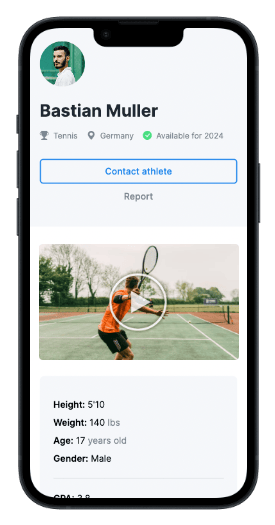
Create a free profile
StudBud Athlete Profile is the best free way to find a scholarship.

